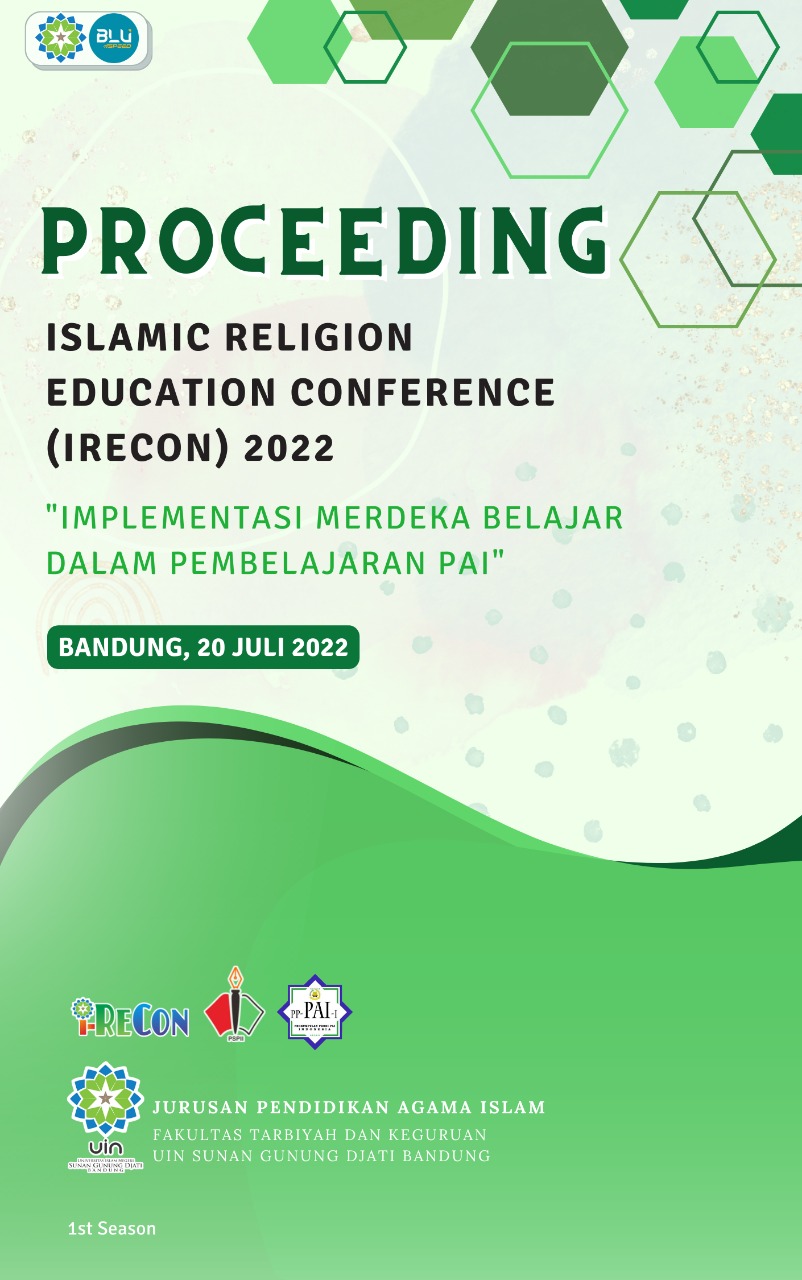Sikap Siswa Terhadap Kreativitas Guru Pendidikan Agama Islam Dan Hubungannya Dengan Kedisiplinan Mereka Di Sekolah
Abstract
The aims of the study were: 1) To find out the students' attitudes towards the creativity of Islamic religious education teachers in class VI SDN Simpangan 01 Bekasi. 2) Knowing the discipline of class VI SDN Simpangan 01 Bekasi students. 3) Knowing the relationship between students' attitudes towards the creativity of Islamic religious education teachers and their discipline in class VI SDN Simpangan 01 Bekasi. This study uses a quantitative approach with a descriptive method. The data collection technique is through observation, interviews, and questionnaires. The data analysis used a statistical approach, namely: partial analysis, data normality test, and correlation test, the research sample was 68 students of class VI SDN Simpangan 01 Cikarang Utara Bekasi Regency. The results of the study can be concluded: a. Students' attitudes towards the creativity of PAI teachers are included in the high category, this is based on the average score of all indicators of the X variable, which is 4.00 which is in the interval (3.40 – 4.19), b. The reality of their discipline at school is included in the high category, this is based on the average score of all Y indicator variables, which is 4.14 which is in the interval (3.40 – 4.19), c. The relationship between students' attitudes towards the creativity of Islamic religious education teachers with their discipline in high school categories. This can be seen from the calculation of the correlation coefficient analysis between variables X and Y is 0.88. The number 0.88 is in the range of 0.81-0.99 and it means that the correlation is in the high correlation category.
Downloads
References
Evans, J. R. (1994). Berfikir Kreatif dalam Pengambilan Keputuan Manajemen. Jakarta: Bumi Aksara.
Fachrudin, S. I. (1989). Administrasi Pendidikan. Malang: Tim Publikasi FIB IKIP.
Fathoni, A. (2006). Manajemen Sumber Daya Manusia. Jakarta: Rineka Cipta.
Febrianti, R. (2015). Perilaku Kedisiplinan Siswa Kelas X Selama Proses Pembelajaran Ilmu Gizi. Skripsi.
Ghozali. (2016). p. 154.
Gie, T. L. (1975). Crara Belajar yang Efisien. Yogyakarta: Pusat Kemajuan Studi UMG Press.
Gordon, T. (1996). Mengajar Anak Berdisiplin Diri di Rumah dan di Sekolah. Jakarta: PT. Gramedia Pustaka Utama.
Gunarso, S. D. (2000). Psikologi Untuk Membimbing. Jakarta: PT. Gunung Mulia.
Gunawan, H. (2012). Pendidikan Krakter Konsep dan Implementasi. Bandung: CV Alfabeta.
Hamzah, A. (2014). Pendidikan Agama Islam untuk Perguruan Tinggi. Bandung: Alfabeta.
Haqqi, A. &. (2019). Kedisiplinan Belajar Siswa di Sekolah Dasar (SD) Negeri Cot Keu Eung Kabupaten Aceh Besar (Studi Kasus). Journal Of Education Science (JES).
Hasanah, A. (2012). Pendidikan Karakter Berperspektif Islam. Bandung: Insan Komunika.
Hayati, T. (2013). Pengantar Statistika Pendidikan. Bandung: CV Insan Mandiri.
Hayati, T. (2013). Pengantar Statistika Pendidikan. Bandung: CV Insan Mandiri.
Hurlock, E. (2003). Psikologi Perkembangan. Jakarta: Erlangga.
Ihsan, H. (2007). Filsafat Pendidikan Islam. Bandung: Pustaka Setia.
Indonesia, R. (2006). Undang-Undang Republik Indonesia No 14 Tahun 2005 tentang Guru dan Dosen & Undang-Undang Republik Indonesia No 20 Tahun 2003 tentang Sisdiknas. Bandung: Permana.
Intansari, A. (2015). Peningkatan Budaya Disiplin Siswa Di Sekolah Dasar Negeri Selotapak No.424 Trawas Mojokerto.
Isjoni. (2007). Saatnya Pendidikan Kita Bangkit. Yogyakarta: Pelajar.
Kartono, K. (1992). Pengantar Ilmu Mendidik Teoritis. Bandung: Mandar Maju.
Kunandar. (2007). Guru Professional Implementasi Kurikulum Tingkat Satuan Pendidikan dan Sukses Salam Sertifikasi Guru. Jakarta: Raja Grafindo Persada.




